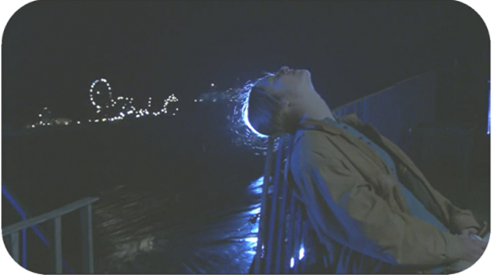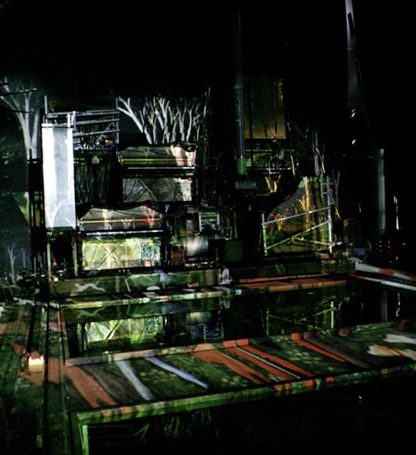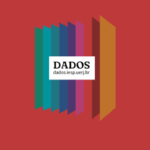Ligia Souza, writer, researcher, professor, and editor. She is a postdoctoral researcher at LabDrama (Laboratory for Dramaturgy and Performative Writing at the Institute of Arts, UNICAMP). She holds a Ph.D. in Performing Arts from USP and a Master’s degree in Literature from UFPR. Currently, she is conducting research at the Département Arts of ENS/PSL – École Normale Supérieure in Paris, France. She is the founder and editor of la lettre création, which publishes contemporary Brazilian dramaturgy.
The concept of presence is a central theme in contemporary studies on the Performing Arts. In this sense, Revista Brasileira de Estudos da Presença aligns with this centrality, featuring publications that directly discuss this notion and others that expand its proposition, the Journal already has over 40 issues. The first two editions present a more in-depth reflection on the topic: both titled “Presence”, and initiate discussions with international contributions from scholars like Jean François Dusigne, Hans Ulrich Gumbrecht, Marvin Carlson, Richard Schechner, Hans-Thies Lehmann, and Brazilian researchers like Gilberto Icle, Beatriz Ângela Vieira Cabral, Luiz Fernando Ramos, Maria de Lourdes Rabetti, among others.
It is not just about conceptual discussions on the topic, but primarily about possible connections with various practices: “presence is not just the theme but the network through which discussions about the actor, the scene, performance, and ethnoscenology are intertwined” (Alcântara et al., 2011, p. 263).
The issues also intensely discuss plural reflections on presence, such as in volume 10, issue 1, titled “Performance Philosophy”, in which we highlight the article Boundaries between Performance Arts and Philosophy by Professor Charles Feitosa. The title raises questions already addressed in the video of this post. In the article, the researcher explores possible intersections between theoretical and philosophical abstraction and the practice of performance, problematizing concepts such as “border” and “presence”.
Beyond focused studies on presence, I also want to point out studies published by the Journal that contribute to expanding the understanding of this notion. This perspective relates to the study we developed in our postdoctoral research titled “The Book in Performance: Some Reflections about dramaturgy publication”,1 in which we question the possibility of creating theatricalities and performativities in dramaturgy books.
When confronted with reflections on presence throughout the various years of the Journal’s publication, the question we posed begins with the following concern: how can we think about the production of presence in events where the traditional here and now of the scene is not the central focus? In this sense, we encountered several articles discussing this concept in artistic propositions that assume a medium for their creation.
In addition to the thematic issues with dossiers focused on technology (volume 06, issue 02), cinema (volume 14, issue 01), and fields related to presence (volume 07, issue 03), we will highlight five articles that develop this notion from artistic materialities whose fruition does not operate on the logic of the here and now.
To begin, we highlight the study “The Construction of Presence and the Multimediatic Stage: the hegemony of an immanent presence” by Juarez Soares and Stephan Baumgaertel (2015), which traces a theoretical analysis of the notions of emanative (representational) presence and immanent (performative) presence, problematizing these issues based on reflections on current multimedia scenic constructions.
Moving from the use of multimedia resources by and in the scene to creating filmic works from the scene, we indicate the article Effects of Presence: what methods for film-theater? by French researcher Sandrine Simeon (2017). In this study, she discusses a series of French theatrical performances that gained filmic versions and explores the notion of presence at various levels of audiovisual construction: from framing to editing and the spectators’ relationship with the film on the screen.

Image: SIMEON (2017).
Image 1. Image from the film Le Dernier Caravansérail by Ariane Mnouchkine (2006)
In dialogue with Simeon’s study, we recommend the article Pina Bausch and Café Müller on screen: the mise-en-scène of co-presence of bodies and closed eyes by researcher Cristiane Wosniak (2018), which presents a study on Wim Wenders’ documentary film “Pina”. Expanding notions of presence sharing from theoretical discussions by filmmaker Jean-Louis Comolli and philosopher Gilles Deleuze, the author considers the cinematographic condition as a language of presence, using discussions about time and the mise-en-scène of cinema.
Maria Clara Ferrer (2017), in the article Impersonal Presences: tones of human in the landscape-scene, presents two radical scenic experiences to problematize the notion of presence associated with the actor’s activity. By analyzing the plays “Stifters Dinge” by Heiner Goebbels and “Variations on Death” by Claude Régy, she exposes constructions based on scene-landscapes, where presence is perceived as an activity of the spectator’s responsibility.

Image: SIMEON (2017).
Image 1 – Hybrid landscape of “Stifters Dinge” by Heiner Goebbels, 2007. Source: photo by Mario Del Corto.
Finally, we present the article by Ligia Diniz (2017), A Soul Dancing or Pluning: body and presence in the literary experiences. In this study, the researcher develops a discussion about the body during the fruition of poetic and fictional texts, proposing imagination as a form of production of presence in which physicality is mobilized from the effects of reading. This article most contributes to thinking of dramaturgy as a producer of theatricality and performativity, the objective of my current research.
We conducted this survey precisely to indicate the plurality of reflections that expand the notion of presence and demonstrate the range of materials available in the numerous editions of the Revista Brasileira de Estudos da Presença. With a completely interdisciplinary approach, these articles, along with others not cited, invite us to expand the field of reflection and build new dialogues with research in the performing arts.
Note
1. Research funded by FAPESP – Fundação de Amparo à Pesquisa de São Paulo (grants: #2021/04837-9).
References
ICLE, G., et al. Editorial. Revista Brasileira de Estudos da Presença [online]. 2022, vol. 1, no. 2, pp. 263–267 [viewed 03 September 2024]. https://doi.org/10.1590/2237-266024671. Available from: https://www.scielo.br/j/rbep/a/cKnQHFjL9FBkzsCdsDnW4vD/
DINIZ, L.G. Uma Alma que Dança ou Despenca: corpo e presença na experiência literária. Revista Brasileira de Estudos da Presença [online]. 2022, vol. 7, no. 3, pp. 477–504 [viewed 03 September 2024]. https://doi.org/10.1590/2237-266068773. Available from: https://www.scielo.br/j/rbep/a/JhsG8B6w6kC4Z3PRBxwDk9D/
FEITOSA, C. Fronteiras entre as Artes da Performance e a Filosofia. Revista Brasileira de Estudos da Presença [online]. 2022, vol. 10, no. 1, pp. 01–25 [viewed 03 September 2024]. https://doi.org/10.1590/2237-266092410. Available from: https://www.scielo.br/j/rbep/a/LYGSWgwhZ3bRZtfMXppzrbq/
FERRER, M.C. Presenças Impessoais: tons de humano na cena-paisagem. Revista Brasileira de Estudos da Presença [online]. 2022, vol. 7, no. 3, pp. 626–648 [viewed 03 September 2024]. https://doi.org/10.1590/2237-266047774. Available from: https://www.scielo.br/j/rbep/a/J5YRqw7j5KpyN9DK4rRH9Pw/
NUNES, J. and BAUMGARTEL, S. A Construção de Presença e a Cena Teatral Multimidiática: a hegemonia de uma presença imanente. Revista Brasileira de Estudos da Presença [online]. 2022, vol. 5, no. 3, pp. 640–661 [viewed 03 September 2024]. https://doi.org/10.1590/2237-266047774. Available from: https://www.scielo.br/j/rbep/a/J5YRqw7j5KpyN9DK4rRH9Pw/
SIMEON, S. Efeitos de Presença: estratégias do filme-teatro? Revista Brasileira de Estudos da Presença [online]. 2022, vol. 7, no. 3, pp. 573–600 [viewed 03 September 2024]. https://doi.org/10.1590/2237-266069703. Available from: https://www.scielo.br/j/rbep/a/7dQVbW7Fvqdm6frwDZmRKCj/
WOSNIAK, C. Pina Bausch e Café Müller no Cinema: a mise-en-scène da copresença do corpo e dos olhos fechados. Revista Brasileira de Estudos da Presença [online]. 2018, vol. 8, no. 3, pp. 469-486 [viewed 03 September 2024]. https://doi.org/10.1590/2237-266076227. Available from: https://www.scielo.br/j/rbep/a/QDsmYXcnzSKBMCmHNzLxPfD/
External links
Revista Brasileira de Estudo da Presença – RBEP: www.scielo.br/rbep
Revista Brasileira de Estudos da Presença – Site: https://www.seer.ufrgs.br/presenca
Revista Brasileira de Estudos da Presença – Redes sociais: Facebook | Instagram
About Charles Feitosa
He is a full professor and researcher in the Postgraduate Programs in Performing Arts at the Universidade Federal do Estado do Rio de Janeiro (PPGAC/UNIRIO) and in Philosophy at the Universidade Federal do Rio de Janeiro (PPGF-UFRJ), as well as the coordinator of Pop-Lab (Laboratório de Estudos em Filosofia Pop).
Como citar este post [ISO 690/2010]:
















Recent Comments